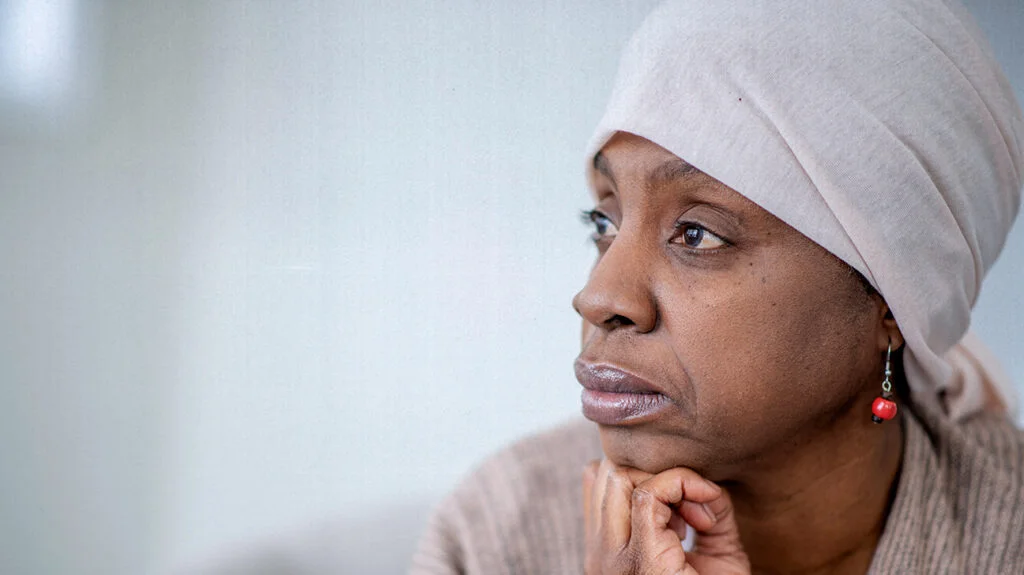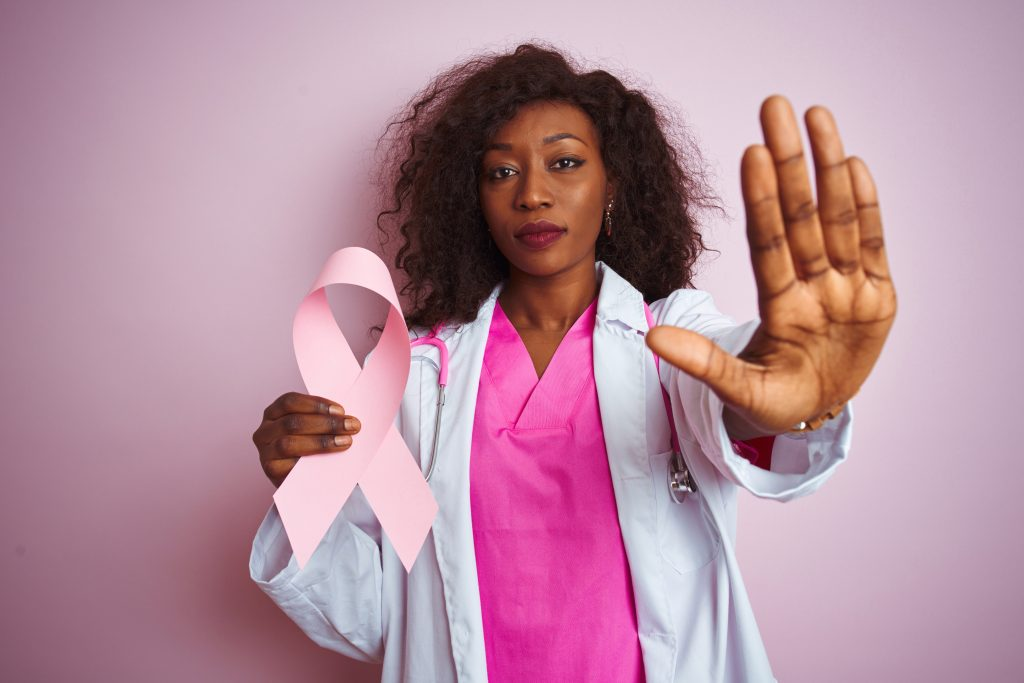Breast cancer is a devastating disease affecting millions of women worldwide. However, it has been observed that Black women face unique challenges that make their fight against this disease even more complex.
This situation has been linked with the prognosis that black Women are less likely to survive a breast cancer diagnosis. Let’s explore the barriers faced by Black women in their battle against breast cancer.

A Disproportionate Burden: Breast Cancer Disparities
Black women are disproportionately affected by more aggressive subtypes of breast cancer, such as triple-negative breast cancer (TNBC) and inflammatory breast cancer. While Black women are less likely to be diagnosed with breast cancer than white women, they are more likely to die from the disease.
A recent study published in Cancers found that Black women may be genetically predisposed to higher incidences of triple-negative breast cancer. This means that Black women not only face higher rates of diagnosis but also have a greater likelihood of developing the most aggressive form of breast cancer.
Moreover, socio-economic factors exacerbate the impact of breast cancer on Black women. Access to quality healthcare is less readily available to many in this community due to systemic barriers, resulting in delayed diagnoses and treatment.
This gap in accessibility contributes to later-stage cancer detections and a consequent decrease in survival rates. In addition to the physical challenges that come with the disease, Black women often navigate a complex array of social and emotional issues as they confront and fight breast cancer. Read Also: Groundbreaking Drug Promises to Lower Malaria Rates for Pregnant Women with HIV in Africa

Barriers to Treatment
Several barriers can hinder Black women’s access to effective treatment for breast cancer. Issues of accessibility and affordability of healthcare often stand in the way, and a lack of insurance coverage for many compounds the problem.
Cultural barriers and mistrust in the medical system, partly owing to historical abuses, also contribute to delays in seeking treatment.
Disparities in health education mean that Black women might not recognize symptoms or understand the importance of early detection and continuous treatment, leading to worse outcomes.
Furthermore, biases within the healthcare system can lead to substandard care. Studies have shown that Black women with breast cancer are less likely to receive recommended treatments, such as hormone therapy, and are more likely to experience treatment delays than their white counterparts.
These delays can be critical, as timely treatment is often a key factor in survival rates. Moreover, economic hardship may lead to prioritizing immediate needs over ongoing treatment, which can lead to noncompliance with prescribed therapy regimens, adversely affecting prognosis.

Mental and Emotional Challenges
The barriers to effective treatment for breast cancer extend beyond the physical into mental and emotional territories for Black women.
These barriers often contribute to a heightened sense of isolation, lack of adequate support systems, and psychological distress.
The stress associated with battling breast cancer can be exacerbated by the cultural stigma associated with the disease, leading many women to suffer in silence rather than seek the necessary emotional and mental health support.
Furthermore, the compounded effect of managing the clinical aspects of the disease alongside personal responsibilities can lead to overwhelming anxiety and depression.
These mental health challenges are often under-addressed in the healthcare system, necessitating a more holistic approach to treatment that includes mental and emotional support tailored to the unique needs of Black women facing breast cancer. Read Also: Impact of Racism and Discrimination on health in the US
The Role of Environmental Factors
Environmental factors play a critical role in shaping the health outcomes of Black women battling breast cancer. The neighborhoods in which many Black women reside often lack the appropriate healthcare infrastructure necessary for early detection and continuous management of the disease.
This includes insufficient local cancer screening programs, a scarcity of oncology specialists, and limited access to advanced medical facilities.
Additionally, these communities may be exposed to environmental pollutants, which have been linked to an increased risk of developing certain types of cancer, including breast cancer.
Research has shown that certain environmental factors like phthalates, which are linked to breast cancer, developmental issues, decreased fertility, obesity, and asthma, could also play a role in the increased risk faced by Black women.

Moreover, the socio-economic status of many Black women affects their ability to seek and receive adequate medical care. Women living in lower-income neighborhoods may not have the financial resources to afford out-of-pocket expenses for cancer care.
Even with health insurance, the cost of co-pays, deductibles, and non-covered treatment options can become a barrier to accessing lifesaving therapies.
Consequently, environmental and socioeconomic factors converge, creating significant obstacles that hinder the fight against breast cancer among Black women and contribute to the disparities in survival rates. Read Also: 13 Less Known Facts About Black History Month
Moving Forward
To address these disparities, it is crucial to educate Black women about the risks and symptoms of breast cancer and emphasize the importance of early detection.
Support networks, both at the community and healthcare level, can play a significant role in providing necessary resources for women battling this disease.
It is clear that more research is needed to understand the reasons behind these disparities fully. Only then can we hope to eliminate these barriers and ensure that all women, irrespective of their racial or ethnic backgrounds, have equal access to breast cancer care.



